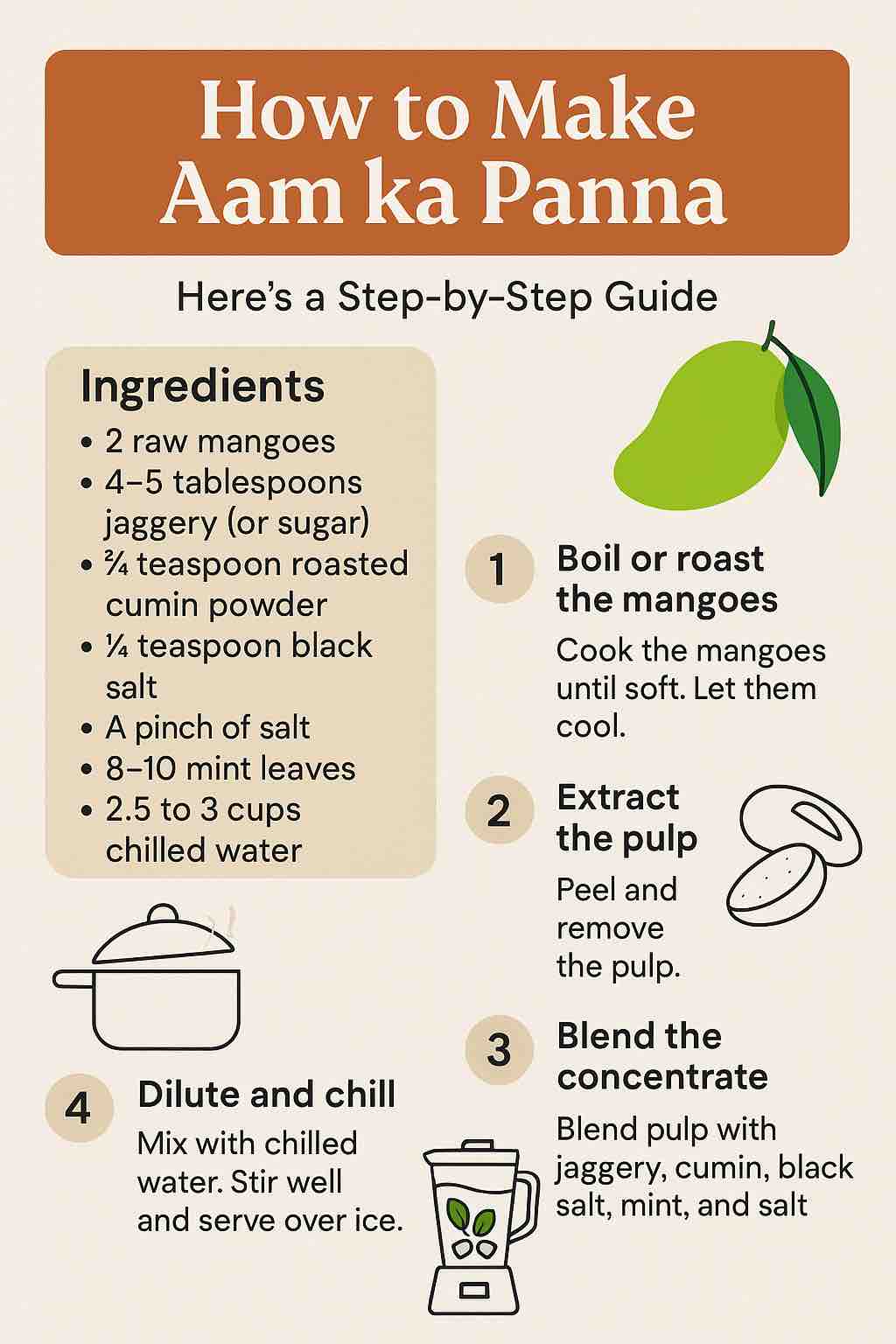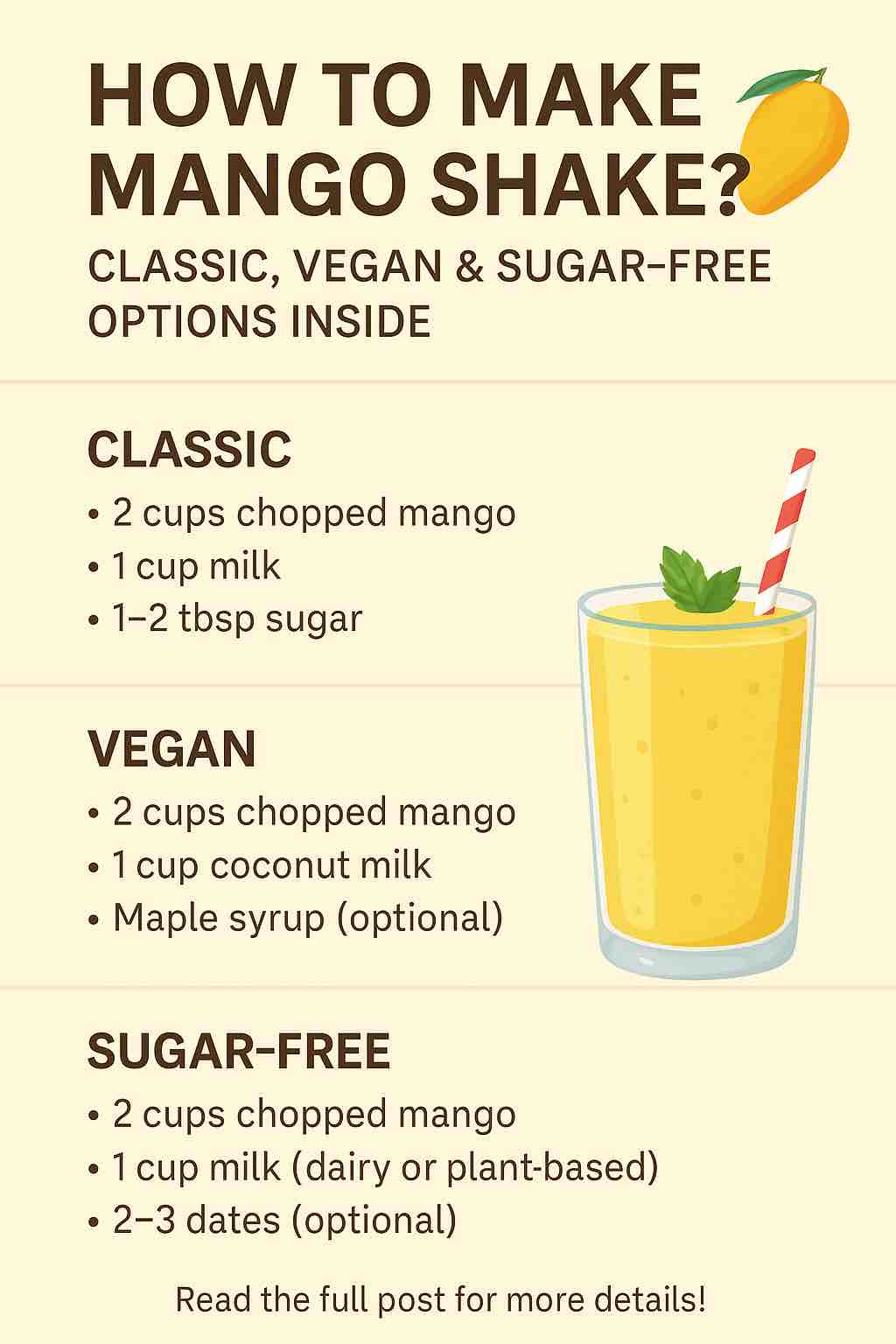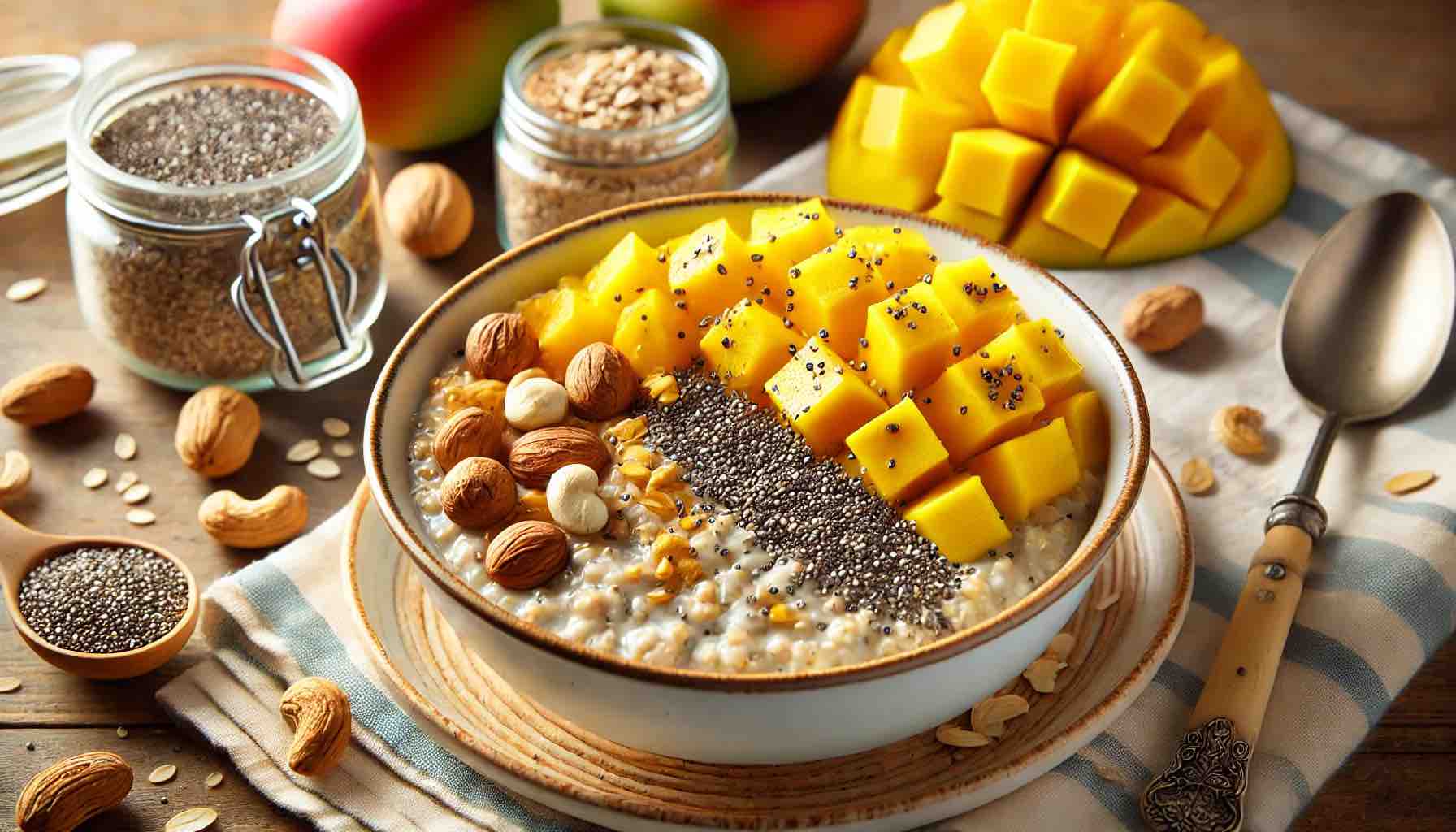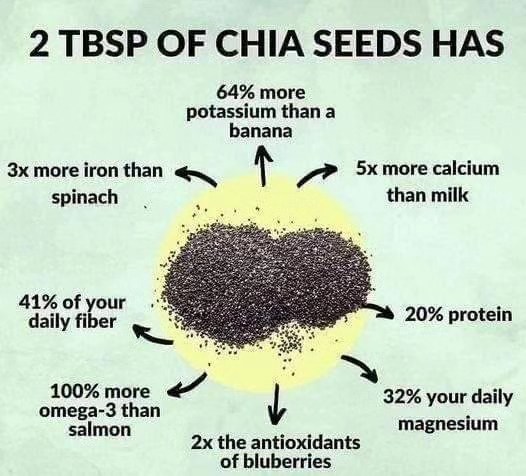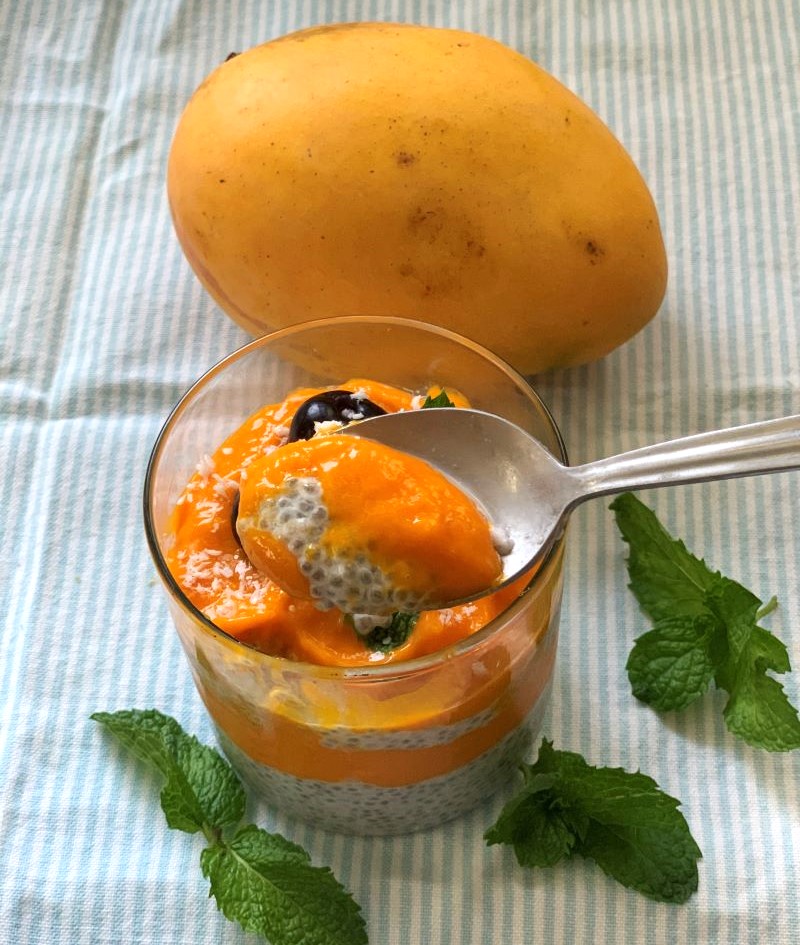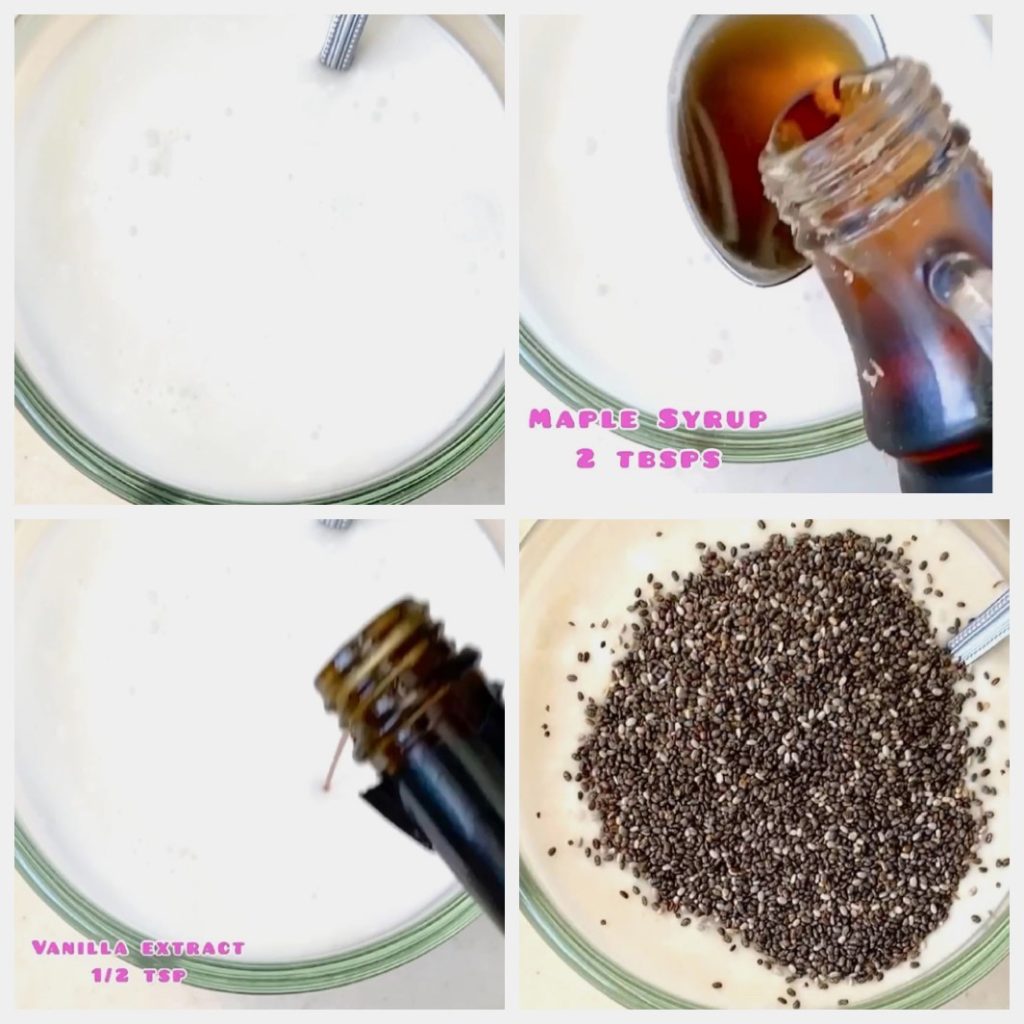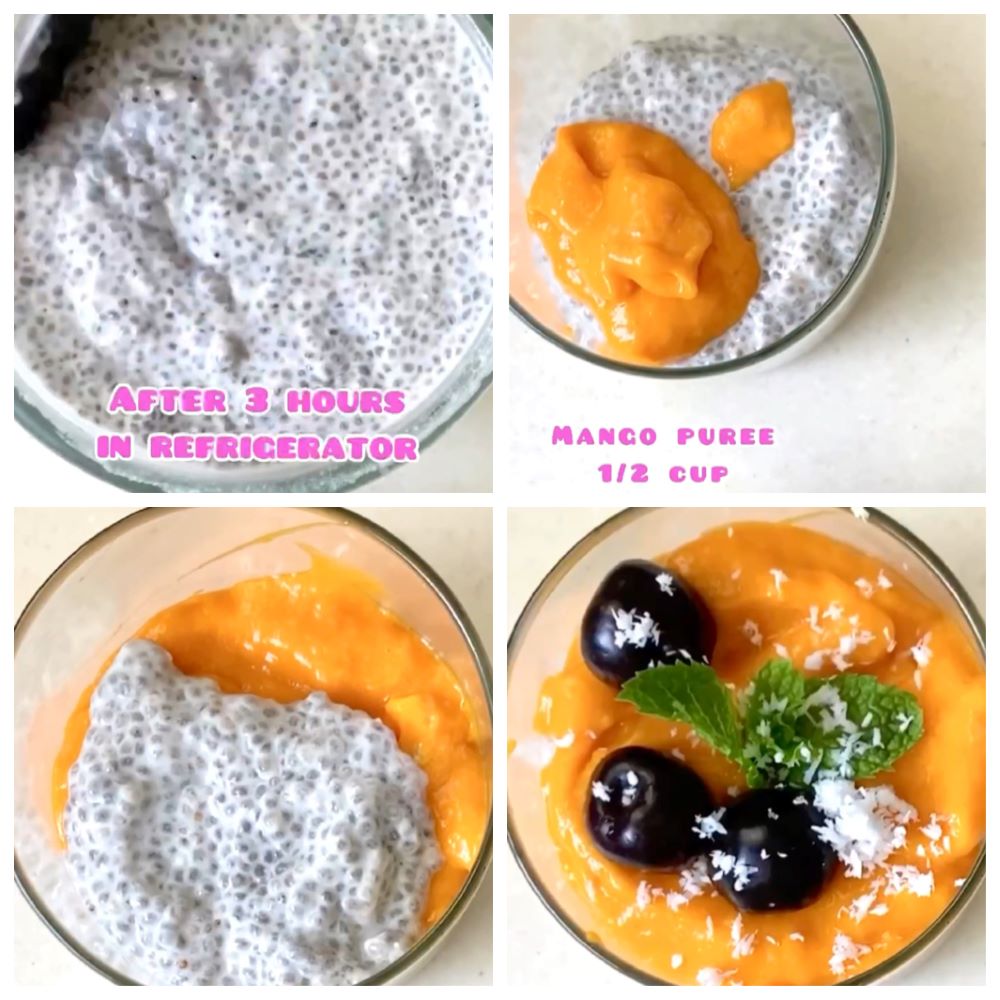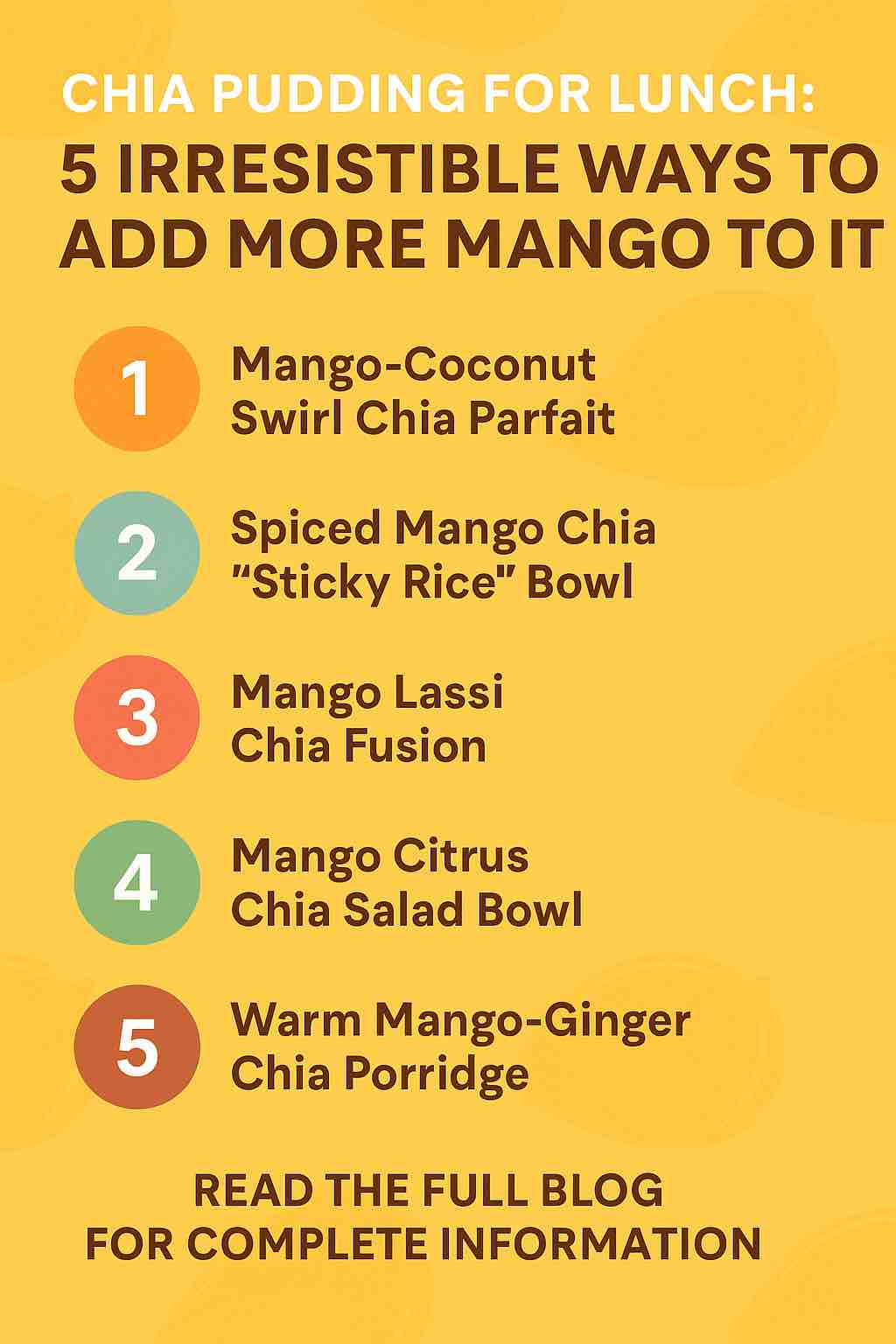
Who says chia pudding is only for breakfast or dessert?
With its creamy texture, rich fiber content, and ability to play well with virtually any flavor, chia pudding makes a smart, satisfying, and surprisingly sophisticated lunch option—especially when paired with the king of tropical fruits: mango.
Mango brings not just natural sweetness and a sunny golden hue to the table, but also adds a depth of flavor that can range from floral and honeyed to citrusy and tangy, depending on how it’s used. So if you’re ready to elevate your chia pudding game and make lunch more vibrant, here are five creative, indulgent-yet-healthy ways to pack in more mango.
Let’s dive spoon-first into the mango madness.
🍨 1. Mango-Coconut Swirl Chia Parfait (Layered & Lush)
Imagine scooping into layers of cool chia pudding, silky mango purée, and creamy coconut yogurt. Each bite is a perfect contrast: the soft pudding gives way to mango’s juicy brightness, balanced by a rich coconut swirl.
How to Make It:
- Start by soaking your chia seeds overnight in coconut milk with a dash of vanilla and a touch of maple syrup.
- In the morning, blend ripe mangoes into a smooth purée. (For tang, squeeze in a bit of lime juice.)
- Alternate layers in a glass jar: chia pudding → mango purée → coconut yogurt → diced mango chunks.
- Finish with toasted coconut flakes, lime zest, and maybe a sprig of mint.
Why it works: This is essentially a tropical parfait that satisfies your eyes, your tastebuds, and your hunger. Each spoonful is a little different—a layered flavor journey.
🥭 2. Spiced Mango Chia “Sticky Rice” Bowl (Inspired by Southeast Asia)
This one takes inspiration from Thai mango sticky rice, but reimagines it with chia seeds for a high-fiber, low-glycemic twist.
Key Flavors: Coconut, ripe mango, a hint of salt, and a dash of toasted sesame.
Build It Like This:
- Prepare chia pudding with full-fat coconut milk, a pinch of salt, and a spoonful of honey.
- Add a dash of ground cardamom or cinnamon for depth.
- Serve in a bowl, topped with:
- Sliced mango
- A drizzle of coconut cream (use the thick top layer of a can)
- Toasted sesame seeds or mung beans for crunch
Optional: Sprinkle with puffed quinoa or chopped roasted cashews for extra texture.
Why it works: It’s a lunchtime treat that tastes like dessert—but it’s packed with healthy fats, fiber, and fruit. Comforting and energizing.
🍹 3. Mango Lassi Chia Fusion (Yogurt-Infused Power Bowl)
Channel the creamy deliciousness of a mango lassi in this refreshing chia pudding twist that’s ideal for warmer days or post-workout lunches.
Blend These Elements:
- Chia seeds soaked in a blend of almond milk and plain Greek yogurt (or a plant-based alternative).
- Mango blended with a pinch of turmeric, cardamom, and a drizzle of honey.
- Stir some mango purée directly into the chia base; leave some for topping.
Top It Off:
- Chopped pistachios
- A swirl of yogurt and a drizzle of purée
- A few strands of saffron for luxury (optional)
Why it works: The yogurt makes it tangy and protein-rich, while the mango + spice combo feels both exotic and familiar. Balanced and satisfying.
🍊 4. Mango Citrus Chia Salad Bowl (Zesty & Fresh)
Looking for something bright and palate-cleansing? This chia bowl brings together sweet mango with tart citrus for a refreshing twist.
Assembly Guide:
- Soak chia seeds in orange juice + a splash of lime for a citrusy base.
- Toss together:
- Diced mango
- Orange or grapefruit segments (pomelo if you can find it!)
- Chopped mint
- Add a spoonful of citrus-chia pudding at the base of your bowl.
- Top with the fruit mix and a small handful of granola or crushed macadamia nuts.
Pro Tip: Add a tiny bit of chili powder or Tajín on the mango for a surprising kick.
Why it works: Sweet, sour, and spicy all in one bite. A flavor explosion that’s as energizing as it is light.
🍯 5. Warm Mango-Ginger Chia Porridge (Cozy & Unique)
Not all chia puddings need to be eaten cold! For a comforting lunch on a rainy day, try this cozy, gently warmed version infused with mango and ginger.
Here’s How:
- Gently warm pre-soaked chia pudding on the stove with a bit more plant milk.
- Stir in mango purée, grated fresh ginger, and a touch of cinnamon.
- Let it thicken slightly over low heat, then remove and let cool for a minute.
Top with:
- Caramelized mango slices (sauté in coconut oil with a bit of brown sugar)
- Crushed walnuts or almonds
- A drizzle of maple syrup
Why it works: This is like a rice pudding-meets-fruit compote moment, but with all the nutritional benefits of chia. Deep, spicy-sweet, and comforting.
🥄 Final Tips for Chia Pudding Perfection with Mango
- Ripe mangoes are key. Ataulfo or Alphonso varieties are especially sweet and smooth.
- Consistency is everything. Aim for 3 tablespoons of chia seeds per 1 cup of liquid for a pudding that’s neither too runny nor too thick.
- Soak it overnight for best texture, but 2–3 hours minimum is enough.
- Add a crunch element: toasted coconut, granola, roasted nuts, or even cacao nibs elevate the experience.
📝 Wrapping It Up
Lunch doesn’t have to be boring or rushed. With these five creative ways to add more mango to your chia pudding, you can enjoy a midday meal that’s nutritious, indulgent, colorful, and endlessly customizable.
Whether you’re layering it like a parfait, infusing it with spices, or warming it up for a cozy twist, mango-chia pudding is a canvas—and your lunch break is the perfect time to create.
10 FAQs About Mango Chia Pudding for Lunch
1. Can I use frozen mango instead of fresh mango in chia pudding?
Absolutely! Frozen mango works well—just thaw it first. For purée, you can blend it while still slightly frozen for a chilled texture. Frozen mango is often more affordable and just as nutritious as fresh.
2. How long does mango chia pudding last in the fridge?
It lasts about 4–5 days when stored in an airtight container. Add fresh toppings (like diced mango or nuts) just before serving to maintain texture and freshness.
3. What’s the best type of mango to use for chia pudding?
Varieties like Ataulfo (Honey mango), Alphonso, or Kent mangoes are ideal. They’re smooth, sweet, and low in fiber strings—perfect for blending or slicing.
4. Can I make chia pudding without any added sweeteners?
Yes. Ripe mango is naturally sweet and often enough on its own. But if your mango isn’t sweet enough, try a touch of maple syrup, agave, or dates.
5. How do I fix runny or too-thick chia pudding?
If it’s too runny, stir in more chia seeds and let it sit longer. If it’s too thick, add a splash of plant milk or mango purée to loosen it up.
6. Is mango chia pudding good for meal prep?
Definitely! You can prepare several jars in advance. Just leave space for toppings and stir well before eating. It’s ideal for grab-and-go lunches.
7. What plant-based milk works best with mango chia pudding?
Coconut milk is great for a tropical flavor. Almond, oat, or cashew milk also work well. Use unsweetened varieties so the mango can shine through.
8. Can I warm up chia pudding for lunch?
Yes. Gently heat it on the stove or microwave, especially for recipes like the Warm Mango-Ginger Chia Porridge. Just stir often to avoid clumping.
9. Can I blend chia pudding instead of leaving the seeds whole?
Yes, for a smooth pudding, blend the soaked chia mixture. It creates a texture similar to mousse—especially nice when combined with mango purée.
10. Is chia pudding with mango filling enough for lunch?
It can be! Mango provides carbs and vitamins, chia offers protein and fiber, and if you add nuts, seeds, or yogurt, it becomes a balanced, filling meal.

